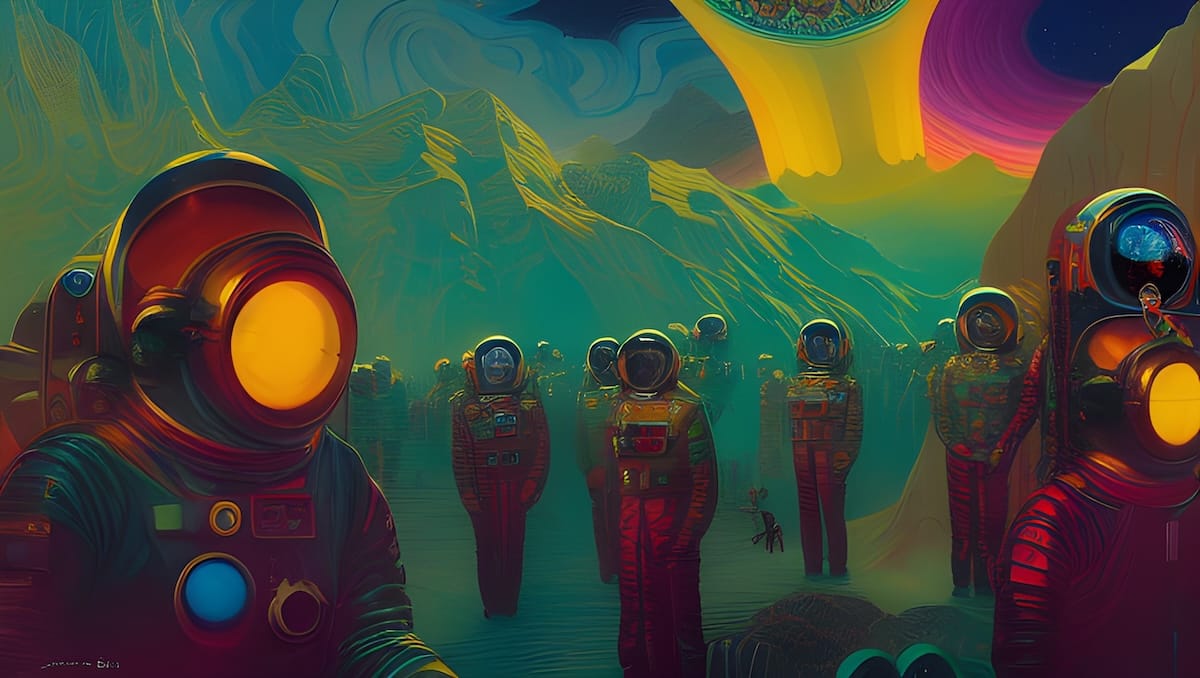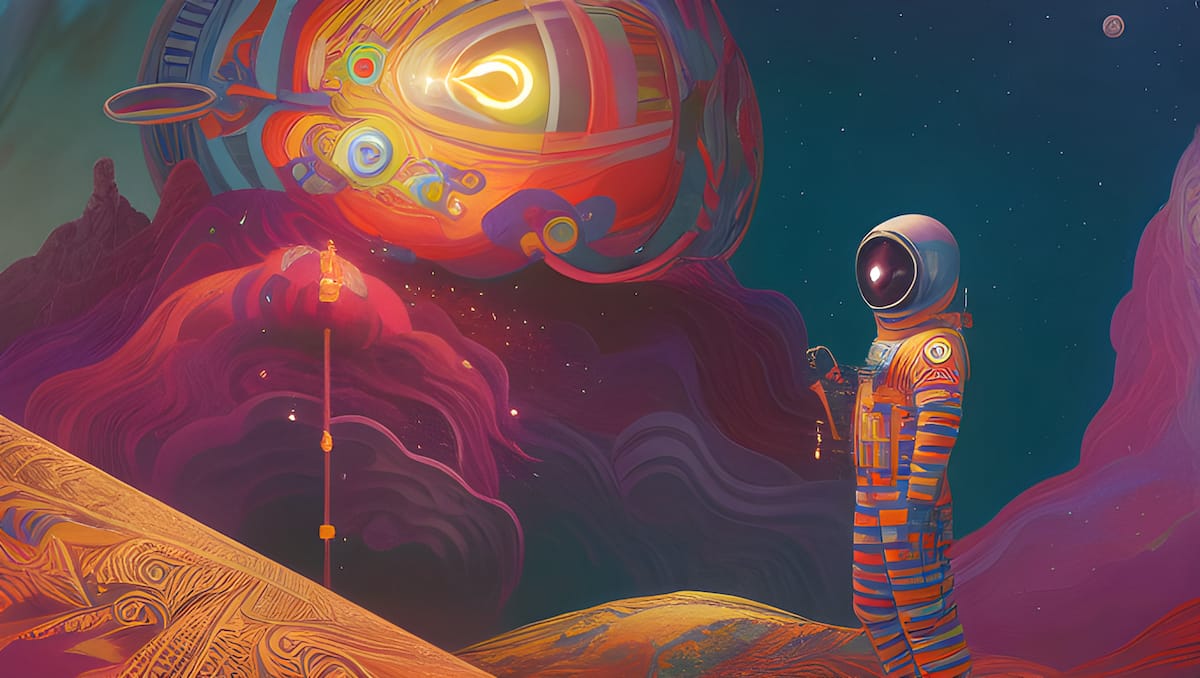AI, tokenization, and the digital life raft for a shrinking world
How AI and tokenization offer hope amid global demographic decline — and why Open Money might be the key to a more stable digital economy.

There’s a new ghost haunting the global economy — not war or inflation or even climate collapse. This one’s quieter, slower, more mathematical. It’s demographics.
We are getting older. And we are not replacing ourselves.
In 22 of the 27 EU member states, the working-age population is already shrinking. The United States isn’t far behind. Japan is years into this demographic decline, and China has officially entered it. In the wake of globalization’s peak, as outlined in Peter Zeihan’s The End of the World is Just the Beginning, the compounding effect of fewer workers and less demand is poised to gut productivity and unravel the complex systems — roads, grids, supply chains — that modern life depends on.
Here's more context on that book and the power of changing demographics:

Larry Fink, CEO of BlackRock, recently put it bluntly in his annual letter to investors: “Economic growth depends heavily on the size of a country's labor force. Europe faces the risk of prolonged economic decline.”
The demographic spiral isn’t just about population counts. It’s about the mechanics of civilization. Fewer people means fewer specialized workers. Less specialization means lower efficiency. Lower efficiency means lower output. The spiral tightens.
And yet, amidst this slow-motion contraction, a new force is rising — digital abundance. It doesn’t replace the wheat harvest, but it might replace the need for as many hands in the field. It won’t refill the workforce, but it might redefine it. That force is artificial intelligence.
AI as a lifeline, not a threat
Fink makes the case that AI, far from being a job killer, could be a demographic lifesaver, particularly for service-based economies. In aging societies facing inevitable labor shortages, AI becomes a necessary co-pilot. “In aging, wealthy societies,” he writes, “AI may be less a threat than a lifeline.”
This is the reversal that needs more air: AI isn’t just about replacing human labor. It’s about compensating for the labor we no longer have. Automation, augmentation, and artificial cognition are becoming the economic scaffolding that lets aging nations maintain productivity without a proportional workforce.
And this is where the Open Money thesis begins to show its full shape.
Because AI’s potential isn’t just unlocked by algorithms — it’s enabled by access to capital and coordination systems that can operate at the same speed.
Which brings us to tokenization.
Tokenization as infrastructure
Think of today’s financial system as an antique switchboard — wires, plugs, intermediaries. It was built for a slower world. Fink compares it to routing emails through the postal service. Tokenization, by contrast, is like email itself: fast, frictionless, global.
Tokenization turns real-world assets — stocks, real estate, funds—into digital tokens that live on a blockchain. These tokens are programmable, instantly transferable, and can be fractionalized to any degree. As Fink puts it: “Every stock, every bond, every fund — every asset — can be tokenized. If they are, it will revolutionize investing.”
Why does this matter in a world with demographic decline?
Because tokenization democratizes. It gives smaller investors access to previously locked-up opportunities — private equity, fine art, high-yield credit — by slicing them into smaller, affordable pieces. It speeds up capital flows, removing multi-day settlement windows. It breaks the bottlenecks of legacy finance and lets digital systems allocate resources at the speed of need.
In a world with fewer workers and more economic fragility, systems that can move faster, cheaper, and with broader participation aren’t just nice to have. They’re essential.
This is a fundamental pillar of Open Money: the idea that capital systems can be redesigned to reflect the speed, flexibility, and borderless nature of the digital world.
After the end of the world
If globalization is winding down, if demographics are tilting toward contraction, and if resource competition is set to rise, then our best defense isn’t nostalgia — it’s invention.
The industrial age didn’t emerge gently. It was a turbulent, uneven leap. No nation industrialized without chaos. But industrialization gave us the blueprint: new systems require new capital frameworks. Just as the 19th century birthed capitalism, communism, and fascism as ways to mobilize industrial infrastructure, today’s digital shift will need its own capital protocols.
This is why Bitcoin matters — not just as a hedge or a store of value, but as a vision for organizing economic life without relying on the same creaking institutions. It creates digital scarcity, a counterweight to digital abundance. And it’s the first open money system — programmable, borderless, and trustless.
Fink even nods in this direction, warning that the U.S. risks “losing its reserve status” if digital assets like Bitcoin become more trusted than the dollar amid spiraling debt and deficits.
But to get there — to a world where Bitcoin or tokenized capital systems actually coordinate global economic activity — we need infrastructure. Specifically, we need identity.
Fink again: “Tokenized assets won’t run through traditional channels… we need a new digital identity verification system.” He points to India’s Aadhaar system as a model, where over 90% of the population can securely verify transactions from their smartphones. Digital ID is the missing puzzle piece to a decentralized, real-time global economy.
The long arc of financial openness
Fink ends his letter with a reminder that markets haven’t always been open. In 1761, a group of elite traders in London tried to privatize access to Jonathan’s Coffee House — the beating heart of the financial world at the time. They failed. The broader investing public won. “Markets don’t naturally evolve to serve everyone equally,” he writes. “They require relentless effort, conscious choices, and constant vigilance.”
Open Money is just that: the conscious effort to make digital capital as participatory as the internet itself. It’s about replacing the scarcity of inclusion with the abundance of access. Tokenization isn’t just a technical upgrade — it’s a democratic imperative.
Because in a world that’s shrinking, digitally, we still have the tools to grow.
Updates on the Open Money Project
The latest phase of the Open Money Project is starting to take shape — and it’s beginning to look a lot like “this, not that.”
We're using comparisons to help make the abstract more tangible. Think: US Dollars vs. USDC. Owning bitcoin vs. owning a bitcoin ETF. Meta ads vs. memecoins.
Each one is a contrast between legacy mechanisms and emergent Open Money alternatives — systems that are faster, more permissionless, and more aligned with the digital-native world we're moving into.
These side-by-sides help illuminate the design shift underway. What once required banks, brokerages, and platforms now just needs a wallet and a network.
We’ve got a few more comparisons queued up for next week. As always, hit reply and let me know what’s resonating — or what needs more work.






